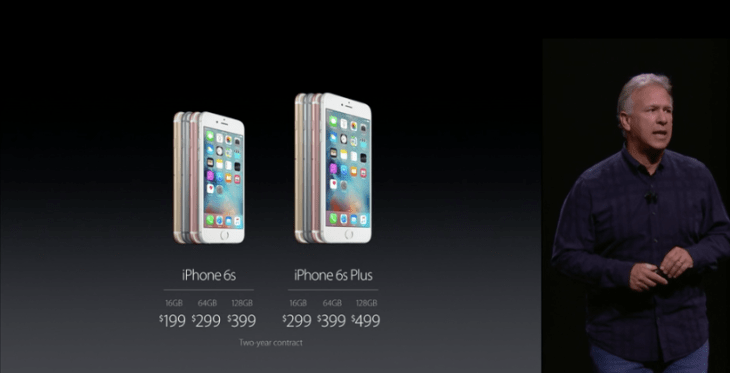Despite hardware upgrades to the cameras of its new iPhones, the iPhone 6s and 6s Plus, announced today — including larger sensors that yield higher megapixel shots and support for 4K recording — the entry-level versions of each model still offer what is an increasingly parsimonious 16GB of storage.
That compares unfavorably across the board with rival high end Android flagships — such as the Samsung’s Galaxy S6, HTC’s One M9 and LG’s G4 — which all come with 32GB of storage as the baseline. Android fans fire up your gloating comments!
Arguably, as Android users will doubtless point out, an entry level flagship smartphone should really pack more than 16GB stock storage nowadays, especially given there’s no Micro SD card slot on the hermetically sealed iPhones for users to expand storage capacity themselves. The only option for getting more storage is to offload stuff to the cloud. Or opt to shell out $100 more for the 64GB iPhone (or $200 more for the 128GB model).
Apple’s own iCloud cloud storage product offers iOS users 5GB of storage for free, to cover backups, photos, apps, documents, etc. After which you can pay Apple to get more space if you run out. It currently offers 20GB, 200GB, 500GB, or 1TB on iCloud, billed monthly. iCloud storage pricing starts a $1 per month for 20GB storage, rising to $20 per month for 1TB.
iCloud’s storage pricing flags up the clear revenue-generating incentive for Apple to cap iOS device storage capacity and monetize as and when users fill their phones with content. But beyond just money-making, cloud storage can represent a very effective lock-in mechanism — given it can require significant effort for users to move their stuff to another storage repository if they do want to switch OSes. The psychological stickiness of interconnected services is of course why every tech company tries so hard to establish an ecosystem.
16GB is not, admittedly, as parsimonious on the storage front as the (now discontinued) iPhone 5C — which initially launched with 16GB as its base but which Apple then reworked down to 8GB to reduce the overall price-tag of the device. And an 8GB ‘not-that-budget iPhone’ was pretty much the definition of false economy if you wanted to use a modern smartphone as freely as it’s intended. The new entry-level iPhone is now the iPhone 5s (so it’s back up to 16GB there, hopefully).
Apple keeping the 16GB variant of its flagship iPhones around is perhaps also aimed at appealing to enterprise buy-in-bulk customers — as a way to reduce the upfront cost to them of buying hundreds or more handsets in one fell swoop.
That said, storage is cheap but storage on iOS devices is not. You can get annoyed about that, or you can recognize it as a component of Apple’s hardware-based business model. You are paying over the odds for storage, but that’s because Apple makes money from selling hardware rather than by monetizing user data for ad-targeting purposes, à la ad behemoth Google.
As the saying goes, “you pays your money, and you takes your choice”; for iPhone 6s and 6s Plus users that choice is either 16GB, 64GB or 128GB.

